Categories: Featured Articles » Home automation
Number of views: 31902
Comments on the article: 5
Differences between single-board computers Orange pi and Raspberry pi, what to buy?
The idea of making a small computer has been in the minds of engineers for many years. One of the most popular types of microcomputers is a smartphone - a symbiosis of a computer with its operating system and functionality and a cell phone. The proliferation of smartphones based on processors with ARM architecture, both processor manufacturers to make miniature but powerful computing systems, and electronics designers to develop in the direction of single-board systems.
System-on-a-Chip (SoC) is the English name for this type of computer. It has two of the most famous destinations:

Single Board Computers on Windows with Intel Atom Processors Most often these are tablets, or larger ones. If we are talking about interesting projects, then LattePanda.

Single-board computers on processors with ARM architecture. A striking representative of such devices are the set-top boxes for the Android TV Box, tablets with Android OS and the like, Single-board PCs like the Raspberry Pi.
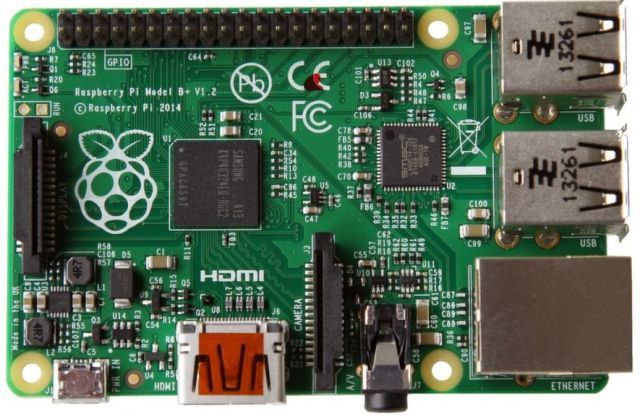
Raspberry family - thanks to them we learned about a computer the size of a credit card
The first Raspberry pi board was announced in 2011 and put into production in 2012. Typically, the Raspberry boards come in different versions, differ in the type designation “Model A”, “Model B” and the like, the differences are in the periphery and power, but more on that later. The first board was rather weak in its capacities, namely (the differences of the A / B model will be listed through a fraction):
-
Broadcom BCM2835 processor, clocked at only 700 MHz;
-
256/512 Mb RAM;
-
1/2 USB port;
-
SD card slot;
-
GPIO comb for connecting peripherals and creating your automation projects;
-
Model B has an Ethernet connector;
-
3.5 mm Audio, RCA, HDMI CSI, DSI.
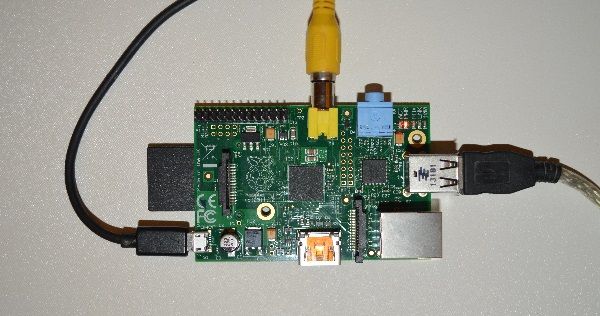
Despite the weak technical characteristics, the community of electronics and computer enthusiasts warmly welcomed such a “single-board” concept, the boards were sold in a rather large circulation, and the developers decided not to stop there by releasing new models.

Current versions of Raspberry in 2017
In 2017, the most common motherboards are Raspberry Pi 3 model B and Raspberry Pi Zero. Let's get acquainted with their characteristics, start with the 3rd generation of “raspberries”:
-
Quad-core processor with a clock frequency of 1.2 GHz (Broadcom BCM2837);
-
1 GB of RAM;
-
Micro SD card slot;
-
4 USB, 1 micro-USB OTG;
-
HDMI, Audio Jack;
-
Ethernet 10/100;
-
GPIO CSI, DSI.

The Pi Zero board is very tiny, its size is half that of its “full-fledged” counterparts, and the characteristics are correspondingly the same:
-
Broadcom BCM2835, as on the first board, but works at 1 GHz;
-
512 MB RAM;
-
Micro SD card slot;
-
2 micro-USB;
-
HDMI
-
Wi-Fi (only for model zero W);
-
GPIO, CSI, DSI.
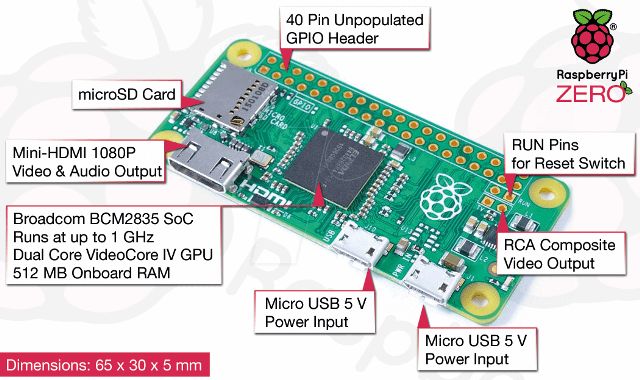
In order for Malinka to work, you must purchase an additional 5 V and 2 A power supply, a micro-SD memory card of at least 4 GB of class 10 (the speed of the system as a whole will depend on this). There is no built-in memory on the board, so the operating system is installed on a memory card, it is worth noting that the first versions used an SD card, and the new ones used micro-SD.
Operating system and software
Malinka uses an ARM processor, so it will have to be limited to Linux systems, from the Microsoft OS, only Windows 10 IoT is available. Perhaps, of all single-board computers, it is raspberry that has adapted most of all operating systems, nevertheless, the following are officially supported:
-
Raspbian OS, as the name implies, is a "native" system from the manufacturer, as well as the fact that it is based on Debian;
-
Fedora for "raspberries" is called "Pidora";
-
Kodi - media center;
-
OSMC - another media center;
-
RISC OS.
If we talk about "home-made" and non-certified OS, then here is a whole expanse: various options of Ubuntu, Puppy linux, GENTOO, Android, Arch and many others. The software for Linux is available on the same repositories as on the PC versions, in fact, it is logical.
What are GPIO, CSI, DSI connectors for?
In fact, GPIO is almost one of the most important highlights of such single-board computers. First you need to look at its pinout (to enlarge, click on the picture).

The first thing that catches your eye is the presence of power leads - 5 V 500 (300 for model B) mA and 3.3 V 50 mA, which means that you can feed your projects directly from Raspberry if they do not consume high currents. The following fact should be accepted that at the output of any of the outputs the logical unit is not 5 V, but 3.3, but they can be loaded up to 16 mA. No overload protection is provided, so be careful.
You can use these pins to connect sensors and actuators, it’s useful in Smart Home projects. One of the common projects is a weather station.
Various communication interfaces are available to you:
-
SPI
-
I2C;
-
UART.
Three PWM outputs will allow you to adjust the power or other parameters of the connected devices. Also, this connector is used to connect ready-made modules, for example, the Sense module, with an 8x8 LED matrix and a set of sensors for environmental monitoring.

The DSI connector is used to connect special displays for Raspberry, of which there are a great many for sale, both in size and in the presence of a touch panel. Decrypts as Serial Display Interface.

CSI is a similar connector, but for connecting a camera, it bears a similar name - Serial Camera Interface.

Orange pi family
After the success of the Raspberry Pi boards, other developers began to actively promote their Pi-like single-board computer projects, among them there is an entertaining Orange Pi family, which includes many different options and versions.
The main differences between them are the amount of RAM, the presence of built-in Wi-Fi, as well as EMMС memory on the board. Orange is interesting for its price, if for 2017, the price for the 3rd “Malinka” is more than 2500 rubles, for “Orange” - from 1000.
Among the popular and current boards, the following can be distinguished, in order of increasing price:
-
Orange Pi Zero;
-
Orange Pi PC 2;
-
Orange Pi PC Plus.
Let's look at their characteristics in a comparison table.
Orange pi board comparison table
4
Mali-450
micro-SD up to 64 GB
HDMI
As you can see, the boards are quite similar to each other, but some evolution can still be traced, for example, the use of the newer H5 processor, or the installation of internal memory on the board, which greatly speeds up the speed. If you decide to buy a PC Plus board with eMMC memory, it will be better if you install the operating system on it. The logic of work is such that if a flash card with an OS is installed, loading occurs from it, and otherwise, with eMMC.
Why Orange Is Cheaper Than Raspberry
Differences in price are due primarily to the brand, do not forget that Malinki Pi is still the founders of this trend in technology. In Orange, the processors used are cheaper than in Raspberry, in addition, they heat more strongly, and the claimed 1.6 GHz, in fact this is not real, but a marketing operating frequency.
The frequency recommended by the processor manufacturer is at 1.2 GHz. At the standard operating frequency, increased heating is observed, and the recommended passive cooling system does not save. Be careful and get a 5 Volt cooler for Orange / Raspberry. In general, the performance of the two families is similar.
What is the difference between Raspberry vs Orange?
In contrast to Malinki, the Orange website has a lot more supported OSs, while the list is broken down by purpose for a specific Orange pi model.
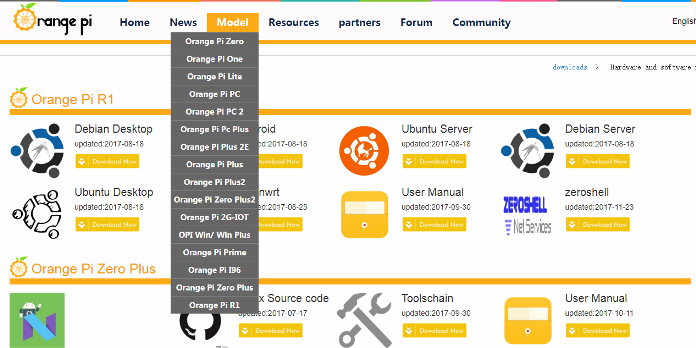
For the current Pi PC 2, the following OSs are observed:
-
Arch linux Server / Desktop;
-
Ubuntu Server / Desktop
-
Debian Server / Desktop;
-
Android Orange OS;
-
Raspbian Server / Desktop.
The list of operating systems for other boards is almost the same, with minor exceptions.
How to use single-board PCs in everyday life?
Let's look at why you need such an abundance of official operating systems and third-party projects.
The use of single-board computers in the role of Smart TV or multimedia center is justified by its wide capabilities and low price.Thus, you can turn your single-board player into a media center for TV using Kodi - it is a free cross-platform player for playing audio, video, photos and watching IP-TV. For Orange, it comes bundled with OpenELEC.

Another topical application is a game console from Raspberry PI or Orange Pi. There are special OSs for this with a huge number of emulators:
-
Dendy
-
Sega
-
Nintendo 64;
-
Dreamcast
-
PS 1;
-
PSP (PPSSPP);
-
And a lot of others, including dos.
There are actually two projects:
1. Recall Box.
2. RetroPie (for Raspbery) and Retroorangepie (for orange, respectively).
There will be no comparison which one is better, because everyone always has their own advantages.
You can use these boards for surfing the Internet, watching videos and working in the office, in the basic Raspbian, with the LibreOffice office suite, there is a pre-installed Chromium browser, if you need Windows software, the same Word runs fine from under Wine. It turns out that all the charms of Linux are available to you, with minimal physical dimensions and power consumption.
Since we are talking about power consumption and Linux, it’s worth mentioning that it’s a great opportunity to create a home cloud or web server. So you get a quiet and energy-efficient system with good performance, which is difficult to achieve using the classic system unit with its coolers.
This is useful in Smart Home systems and a video surveillance server. For video surveillance, as it is fashionable to say, “Out of the Box” there is an excellent project “MotionEye”. With it, you can monitor and record IP cameras via the web interface. It is possible to install it on top of Raspbian, or as a standalone OS.
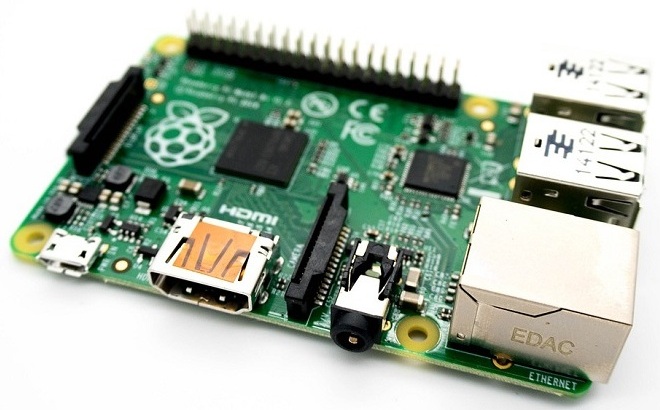
conclusions
Among a number of different single-board computers, there are only two areas with the most developed Internet community. Enthusiast support and knowledge base are most developed at Raspberry pi. This does not mean less well-known boards will be worse, it will just be harder for you to figure out what's what.
Their analogues: Banana PI, C.H.I.P., ODROID, TinkerBoard - have rather interesting characteristics and prices, often surpassing Malinka and Orange. And the Latte-Panda single-board computer is completely powered by an Intel Atom 8300 processor and runs on a full-fledged Windows OS, which at the time of writing is not possible for ARM machines.
However, the cost is comparable to such a form factor of computers as “Stick”, Intel was the pioneer of this form factor, and marketers called it “A computer the size of a USB flash drive”. Unfortunately, they are deprived of full GPIO and flexibility in terms of design solutions of the finished product.
See also:Nextion Displays: Overview, Arduino Connection, Raspbery Pi, Examples, Training
See also at bgv.electricianexp.com
:
